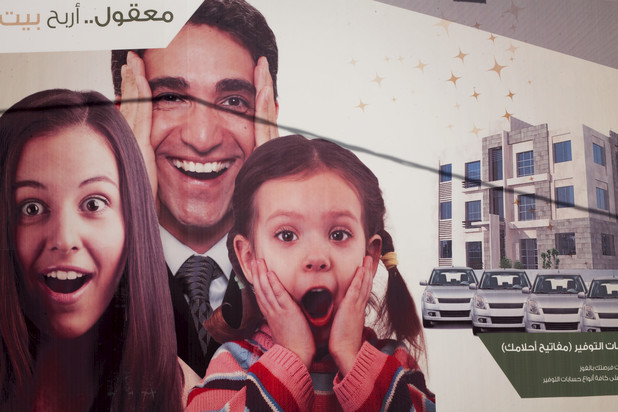29 mar 2012
Welfare Association and Heneghan Peng Architects sign Palestinian Museum Design Agreement
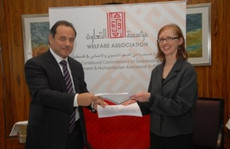
Dr. Nabil Qaddumi, Chairman of the Board of Trustees of the Welfare Association (WA), on Wednesday,March 28, announced the signing of an agreement with Heneghan Peng Architects (HPA) represented by Ms. Roisin Heneghan, Co-founder of Dublin-based Heneghan Peng Architects, for the design of the Palestinian Museum located on 40 Dunums of land leased from Birzeit University in the West Bank. The signing ceremony took place in Amman, Jordan.
In accordance with the agreement which comes after a rigorous selection process by a jury in December 2011 in London, HPA shall provide WA with architectural and engineering services for all Design Phases for Master planning, and Phase 1 development of the Project.
Under terms of the agreement, Projacs International, a leading project management company in the Middle East, will provide professional project management services.
The agreement allows WA to proceed not only with its plans, but also to advance its fundraising objectives in order to fully meet the scope of this project work. "Making the Palestinian Museum a reality is truly a team effort," said Dr. Qaddumi following the signing ceremony. "This agreement will help WA accomplish phase 1 of this special national landmark."
"Being selected to design the Palestinian Museum hub for the Welfare Association, this forward looking Museum of Palestinian culture located on a unique site, is a privilege for us", said Ms. Heneghan.
The Palestinian Museum will be designed to be constructed in 2 phases with the first phase of 2,500 m2 to be completed by 2014. The construction budget for the first Phase will be around US$8 million. The second phase will be in the order of 5,000 m2 and will be developed following the opening of Phase 1.
The Museum will be a unique cultural project and is being developed to become a source of knowledge and new thinking about Palestinian history, culture and contemporary life. As any other museum in the world, the Palestinian Museum will hope to attract the largest possible number of visitors. Realistically, however, given the restrictions that exist for Palestinians, it can only hope to physically serve West Bank Palestinians in the near future and of course international visitors. It will have an extensive outreach programme through branches and satellites (regionally and internationally), and will also benefit from its proximity to Birzeit University.
-----
The Welfare Association is: an independent non-profit organization established in 1983 by a group of Palestinian business and intellectual figures to provide development and humanitarian assistance to Palestinians in the West Bank including Jerusalem, the Gaza Strip, 1948 Areas, and the Palestinian communities in Lebanon. Since 1983, WA provided and managed grants worth around half a billion dollars in support of projects implemented by NGO's in all WA's areas of operation.
Heneghan Peng Architects is: a design partnership founded by Róisín Heneghan and Shih-Fu Peng in New York in 1999 and relocated to Dublin, Ireland in 2001. Over the years, the partnership has developed as it's generative core, a highly adaptive multi-disciplinary collaborative infrastructure demanded by building projects today. In addition to the Palestinian Museum the office is currently on site with the Grand Egyptian Museum at the Great Pyramids, the Giant's Causeway Visitors' Centre in Northern Ireland, the Central Park Bridges at the 2012 London Olympic Park and the Library and School of Architecture for the University of Greenwich in Greenwich, London.
For more information, please contact:
Dr. Faris Nimry, Director of the Palestinian Museum
Welfare Association
Tel: (962-6) 585-0600, Fax: (962-6) 585-5050
E-mail: [email protected]
www.welfareassociation.org
In accordance with the agreement which comes after a rigorous selection process by a jury in December 2011 in London, HPA shall provide WA with architectural and engineering services for all Design Phases for Master planning, and Phase 1 development of the Project.
Under terms of the agreement, Projacs International, a leading project management company in the Middle East, will provide professional project management services.
The agreement allows WA to proceed not only with its plans, but also to advance its fundraising objectives in order to fully meet the scope of this project work. "Making the Palestinian Museum a reality is truly a team effort," said Dr. Qaddumi following the signing ceremony. "This agreement will help WA accomplish phase 1 of this special national landmark."
"Being selected to design the Palestinian Museum hub for the Welfare Association, this forward looking Museum of Palestinian culture located on a unique site, is a privilege for us", said Ms. Heneghan.
The Palestinian Museum will be designed to be constructed in 2 phases with the first phase of 2,500 m2 to be completed by 2014. The construction budget for the first Phase will be around US$8 million. The second phase will be in the order of 5,000 m2 and will be developed following the opening of Phase 1.
The Museum will be a unique cultural project and is being developed to become a source of knowledge and new thinking about Palestinian history, culture and contemporary life. As any other museum in the world, the Palestinian Museum will hope to attract the largest possible number of visitors. Realistically, however, given the restrictions that exist for Palestinians, it can only hope to physically serve West Bank Palestinians in the near future and of course international visitors. It will have an extensive outreach programme through branches and satellites (regionally and internationally), and will also benefit from its proximity to Birzeit University.
-----
The Welfare Association is: an independent non-profit organization established in 1983 by a group of Palestinian business and intellectual figures to provide development and humanitarian assistance to Palestinians in the West Bank including Jerusalem, the Gaza Strip, 1948 Areas, and the Palestinian communities in Lebanon. Since 1983, WA provided and managed grants worth around half a billion dollars in support of projects implemented by NGO's in all WA's areas of operation.
Heneghan Peng Architects is: a design partnership founded by Róisín Heneghan and Shih-Fu Peng in New York in 1999 and relocated to Dublin, Ireland in 2001. Over the years, the partnership has developed as it's generative core, a highly adaptive multi-disciplinary collaborative infrastructure demanded by building projects today. In addition to the Palestinian Museum the office is currently on site with the Grand Egyptian Museum at the Great Pyramids, the Giant's Causeway Visitors' Centre in Northern Ireland, the Central Park Bridges at the 2012 London Olympic Park and the Library and School of Architecture for the University of Greenwich in Greenwich, London.
For more information, please contact:
Dr. Faris Nimry, Director of the Palestinian Museum
Welfare Association
Tel: (962-6) 585-0600, Fax: (962-6) 585-5050
E-mail: [email protected]
www.welfareassociation.org
29 febr 2012
Increase in building Licenses, Says Statistic Bureau

The number of building licenses issued in the fourth quarter of 2011 totaled 1,884, an increase by 21.2% compared with the fourth quarter of 2010, Wednesday said the Palestinian Central Bureau of Statistics (PCBS).
In addition, there was an increase by 9.7% in the total number of issued building licenses for the fourth quarter of 2011 compared with the third quarter of 2010.
The total area of licensed buildings for residential and non residential reasons amounted to 996,300 square meters; of which the total area of new buildings amounted to 846.900 square meters and the total area of existing buildings amounted to 149,300 square meters, said PCBS.
In addition, the total number of licensed dwellings amounted to 3,666; of which 3,142 new units with a total area of 602,800 square meters and 524 existing dwellings with a total area of 116,900 square meters.
In addition, there was an increase by 9.7% in the total number of issued building licenses for the fourth quarter of 2011 compared with the third quarter of 2010.
The total area of licensed buildings for residential and non residential reasons amounted to 996,300 square meters; of which the total area of new buildings amounted to 846.900 square meters and the total area of existing buildings amounted to 149,300 square meters, said PCBS.
In addition, the total number of licensed dwellings amounted to 3,666; of which 3,142 new units with a total area of 602,800 square meters and 524 existing dwellings with a total area of 116,900 square meters.
25 feb 2012
Transformation of Palestinian landscape focus of Designing Civic Encounter project
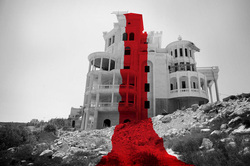
“The Lawless Line,” Decolonizing Architecture, 2011
Urban space, landscapes and experiences are at the center of a new multidisciplinary project focused on Palestine, in which artists, architects, environmentalists, academics and activists have come together to discuss the transformation of space in both Palestinian and other regional Arab cities.
Designing Civic Encounter, an online publication, features essays, photographs and video documentations dealing with issues of urban life — including the effects of occupation, colonialism and commercialism on public spaces and the public experience.
The project started in July 2011 with a symposium, a workshop with Guatemalan-born architect Teddy Cruz and a bus tour of Ramallah highlighting the disparities and contrasts between even various parts of the same West Bank city. Lectures and presentations from this three-day event have been combined with original contributions to form the online publication.
The analysis of space is the main focus of the Designing Civic Encounter project, from the overcrowdedness of urban centers throughout the West Bank, to the empty space left after a home has been demolished in Gaza, from the white space on a billboard, to the fragmentation of formerly connected spaces as a result of Israel’s wall in the West Bank.
“From the beginning it was about looking around the space and trying to connect,” Shuruq Harb, co-curator of Designing Civic Encouter, told The Electronic Intifada. “So the urban tour was a really important component of the project, because it was about creating an experience in the actual space where the discussion is happening, these spaces that are familiar, but also unfamiliar.”
The Designing Civic Encounter project is an offshoot of ArtTerritories, an “independent platform for artists, thinkers, researchers and curators to reflect on their art practice and engage in critical exchange on matters of art and visual culture in the Middle East and the Arab World.”
Settlements “deliberately disconnected” from heritage The project highlights the effects of the occupation on the development of Palestine’s landscapes and spaces, which are so often subtly absorbed into daily life and remain unnoticed. Refugee camps, home demolitions, settlements, military structures, the wall and its impacts on communities are all visual displays of Israel’s policies in the occupied West Bank and Gaza Strip, and have a profound impact on the way in which space is shaped.
For instance, the Israeli settlement building enterprise has had a particular effect on the landscapes of Palestine. Settlements, with their red roofs and linear design, are not only deliberately disconnected from the land’s heritage and traditional homebuilding styles, but they are also beginning to have an effect on the way Palestinians design and build housing complexes in the West Bank.
“The new architecture is disturbingly close to the colonial,” said Yazid Anani, assistant professor in architecture at Birzeit University, in his contribution to the Designing Civic Encouter project entitled “The Mirror” (see text and video of Anani’s presentation on the Designing Civic Encounter website).
“Our housing projects used such public and common architectural elements. Now it’s like containers standing next to each other where you squeeze people in. Architecture becomes a form of containment, reproducing the colonial strategies,” Anani added.
A new diplomatic housing complex on the outskirts of Ramallah, currently under development, bears an uncanny resemblance to Israeli settlements. Similarly, the proposed multi-million dollar housing complex of Rawabi, north of Ramallah, has been described by some as a “Palestinian settlement”: a town built from scratch rather than organically, involving thousands of housing units in a linear arrangement.
“It’s a city modelled after a housing complex, like a settlement, so it’s a really weird concept,” said Harb. “It clearly represents neoliberal policies … in a way it’s like a privatized city.”
Internalizing the occupation While architectural analysis tends to focus on the West Bank, Harb made it clear that it is important to look at the area as a whole in order to understand the space, including the Gaza Strip, the spaces of Palestinians within Israel, and the broader region of the Middle East.
“The way I read the landscape, the things I see happening here, all of these are different manifestations of the same symptom,” said Harb. “So they just take on different forms. I think more and more the occupation has become something that we have internalized, and we can no longer really separate from ourselves, so it becomes difficult to resist it.”
Other contributions to the project include exhibits focusing on home demolitions in Gaza, and the unjust building policies facing Palestinians with Israeli citizenship and lectures about regional cities such as Amman in Jordan and Beirut in Lebanon.
Further afield, the city of Dubai is termed the “city from zero” in a presentation for Designing Civic Encounter by Shumon Basar. This presentation proves an interesting insight into the way in which contemporary urban spaces are developed and feel simultaneously familiar and strange, warm and cold; an analysis surprisingly relevant to cities such as Ramallah and Rawabi (“Shumon Basar,” 15 November 2011).
Invisible lines Another of the main themes of the Designing Civic Encounter project relates to another impact of Israeli occupation: the effects of the Oslo accords and the so-called “peace process” on the urban landscapes of Palestine. Since the Oslo accords of the mid-1990s and the division of the West Bank into areas A, B and C, the use of space has become determined by invisible lines.
Therefore, urban centers in Area A — nominally under Palestinian Authority control — such as Ramallah, Bethlehem and Nablus have become inwardly focused, developing rapidly but are unable to expand outwards, while construction has been immobilized in Area C (the sixty percent of the West Bank under total Israeli military control). The division of the space means that the three areas have been fragmented from one another.
“Oslo has introduced uneven developments,” says the Designing Civic Encounter website “with areas designated A, under PA administration, being the primary site of urbanization and investment while areas designated C, still under Israeli military administration, remain in limbo, suffering from depopulation and isolation, ultimately interrupting the natural expansion of Palestinian built-up areas” (“Urban tour,” 21 July 2011).
One of the unintentional effects of Oslo was to create a new and alternative space within the very line separating the three areas. This phenomenon was investigated by architect Alessandro Petti in his contribution to Designing Civic Encounter, “The Red Castle and the Lawless Line: A Legal-Architectural Fable of Extraterritorial Transformation.”
“Less than a millimeter thick when drawn on the scale of 1:20,000, it measured more than 5 meters in real space,” wrote Petti. “Here, we might reiterate an old question, who owns the thickness of the line?”
This is just one of many fascinating questions posed by the contributors, both local and international. While some of the contributions seem decidedly more technical, they are nonetheless thought-provoking and accessible to the reader, even one with no prior knowledge of architecture or urban design.
Urban space, landscapes and experiences are at the center of a new multidisciplinary project focused on Palestine, in which artists, architects, environmentalists, academics and activists have come together to discuss the transformation of space in both Palestinian and other regional Arab cities.
Designing Civic Encounter, an online publication, features essays, photographs and video documentations dealing with issues of urban life — including the effects of occupation, colonialism and commercialism on public spaces and the public experience.
The project started in July 2011 with a symposium, a workshop with Guatemalan-born architect Teddy Cruz and a bus tour of Ramallah highlighting the disparities and contrasts between even various parts of the same West Bank city. Lectures and presentations from this three-day event have been combined with original contributions to form the online publication.
The analysis of space is the main focus of the Designing Civic Encounter project, from the overcrowdedness of urban centers throughout the West Bank, to the empty space left after a home has been demolished in Gaza, from the white space on a billboard, to the fragmentation of formerly connected spaces as a result of Israel’s wall in the West Bank.
“From the beginning it was about looking around the space and trying to connect,” Shuruq Harb, co-curator of Designing Civic Encouter, told The Electronic Intifada. “So the urban tour was a really important component of the project, because it was about creating an experience in the actual space where the discussion is happening, these spaces that are familiar, but also unfamiliar.”
The Designing Civic Encounter project is an offshoot of ArtTerritories, an “independent platform for artists, thinkers, researchers and curators to reflect on their art practice and engage in critical exchange on matters of art and visual culture in the Middle East and the Arab World.”
Settlements “deliberately disconnected” from heritage The project highlights the effects of the occupation on the development of Palestine’s landscapes and spaces, which are so often subtly absorbed into daily life and remain unnoticed. Refugee camps, home demolitions, settlements, military structures, the wall and its impacts on communities are all visual displays of Israel’s policies in the occupied West Bank and Gaza Strip, and have a profound impact on the way in which space is shaped.
For instance, the Israeli settlement building enterprise has had a particular effect on the landscapes of Palestine. Settlements, with their red roofs and linear design, are not only deliberately disconnected from the land’s heritage and traditional homebuilding styles, but they are also beginning to have an effect on the way Palestinians design and build housing complexes in the West Bank.
“The new architecture is disturbingly close to the colonial,” said Yazid Anani, assistant professor in architecture at Birzeit University, in his contribution to the Designing Civic Encouter project entitled “The Mirror” (see text and video of Anani’s presentation on the Designing Civic Encounter website).
“Our housing projects used such public and common architectural elements. Now it’s like containers standing next to each other where you squeeze people in. Architecture becomes a form of containment, reproducing the colonial strategies,” Anani added.
A new diplomatic housing complex on the outskirts of Ramallah, currently under development, bears an uncanny resemblance to Israeli settlements. Similarly, the proposed multi-million dollar housing complex of Rawabi, north of Ramallah, has been described by some as a “Palestinian settlement”: a town built from scratch rather than organically, involving thousands of housing units in a linear arrangement.
“It’s a city modelled after a housing complex, like a settlement, so it’s a really weird concept,” said Harb. “It clearly represents neoliberal policies … in a way it’s like a privatized city.”
Internalizing the occupation While architectural analysis tends to focus on the West Bank, Harb made it clear that it is important to look at the area as a whole in order to understand the space, including the Gaza Strip, the spaces of Palestinians within Israel, and the broader region of the Middle East.
“The way I read the landscape, the things I see happening here, all of these are different manifestations of the same symptom,” said Harb. “So they just take on different forms. I think more and more the occupation has become something that we have internalized, and we can no longer really separate from ourselves, so it becomes difficult to resist it.”
Other contributions to the project include exhibits focusing on home demolitions in Gaza, and the unjust building policies facing Palestinians with Israeli citizenship and lectures about regional cities such as Amman in Jordan and Beirut in Lebanon.
Further afield, the city of Dubai is termed the “city from zero” in a presentation for Designing Civic Encounter by Shumon Basar. This presentation proves an interesting insight into the way in which contemporary urban spaces are developed and feel simultaneously familiar and strange, warm and cold; an analysis surprisingly relevant to cities such as Ramallah and Rawabi (“Shumon Basar,” 15 November 2011).
Invisible lines Another of the main themes of the Designing Civic Encounter project relates to another impact of Israeli occupation: the effects of the Oslo accords and the so-called “peace process” on the urban landscapes of Palestine. Since the Oslo accords of the mid-1990s and the division of the West Bank into areas A, B and C, the use of space has become determined by invisible lines.
Therefore, urban centers in Area A — nominally under Palestinian Authority control — such as Ramallah, Bethlehem and Nablus have become inwardly focused, developing rapidly but are unable to expand outwards, while construction has been immobilized in Area C (the sixty percent of the West Bank under total Israeli military control). The division of the space means that the three areas have been fragmented from one another.
“Oslo has introduced uneven developments,” says the Designing Civic Encounter website “with areas designated A, under PA administration, being the primary site of urbanization and investment while areas designated C, still under Israeli military administration, remain in limbo, suffering from depopulation and isolation, ultimately interrupting the natural expansion of Palestinian built-up areas” (“Urban tour,” 21 July 2011).
One of the unintentional effects of Oslo was to create a new and alternative space within the very line separating the three areas. This phenomenon was investigated by architect Alessandro Petti in his contribution to Designing Civic Encounter, “The Red Castle and the Lawless Line: A Legal-Architectural Fable of Extraterritorial Transformation.”
“Less than a millimeter thick when drawn on the scale of 1:20,000, it measured more than 5 meters in real space,” wrote Petti. “Here, we might reiterate an old question, who owns the thickness of the line?”
This is just one of many fascinating questions posed by the contributors, both local and international. While some of the contributions seem decidedly more technical, they are nonetheless thought-provoking and accessible to the reader, even one with no prior knowledge of architecture or urban design.
|
Digital C-type print from the series “Desire and Disaster,” by Basel Abbas and Ruanne Abou-Rahme, 2011
Hallucination of freedom Another theme which runs through the project is the rise of commercialism in Palestine’s urban centers — partly a result of neoliberal economic policies. The increased isolation of those in Area A has, according to some of the contributors, created inwards-looking spaces focused on individual material accumulation, rather than national liberation. “There is a reinvention of the middle class in Palestine driven by the hallucination of freedom inside the bubble called |
Ramallah,” wrote Yazid Anani in his aforementioned essay. “Suddenly everybody thinks that we are not under occupation.”
“We have banks, we have schools, we have work, and we can move up and have better jobs,” he continued. “The political struggle, once a collective effort originating from our roots, our networks and our rich social life has disappeared, and individuality has become the norm.”
Another installation, “The Zone,” continues this commercial theme by focusing on the discord created by billboards in public spaces, and their promotion of a globalized commercial dream at the expense of traditional heritage and symbolism.
For example, billboards appropriate symbols of national heritage and the struggle for homeland, such as the olive or the Palestinian farmer, and adapt them to represent commercial trade and investment.
“What struck us as most significant is the way in which this new regime displaced the old collective ‘dreams’ and gave birth to new political discourses and desires largely centered on consumption,” wrote artists Basel Abbas and Ruanne Abou-Rahme.
“The absurdities of this are clear when we just stop to consider that in order for us to invest in this new dream we must somehow ignore the increasingly visible violence of the colonial situation,” the authors explain.
American dream in a Palestinian package Another discovery of the project is that while both public and domestic spaces used to include traditional features such as common meeting areas and central plazas with a focus on social interaction, recent housing developments are utilitarian blocks built to accommodate as many individuals as possible.
“We suddenly woke up after nearly a decade of the Oslo agreements to find out that architecture has become a means of transforming the urban realm into an assemblage of containers, stacking people, homes, businesses and companies on top of each other,” said Azani.
“Somehow it feels like the American dream in a Palestinian package,” said Harb. “Record numbers of people are taking on loans … I think we will have a financial crisis at some point here. I’m not an economist but I feel like it could happen, and once it happens we’re going to see so many things. It’s going to be brutal, because we will realise how sedated we have been.”
However, while this increased commercialism and investment in real estate could be seen as a form of escapism from the occupation, one of the central reasons for increased credit loans is the centrality of the concept of “home” in the Palestinian struggle, another prevalent theme in the Designing Civic Encounter project.
One artistic contribution, entitled “GH0809,” presents destroyed Gazan property as an imaginary real estate window display, highlighting the pain of upheaval after the destruction of a home.
The refugees in diaspora longing to return to their homes lost in 1948, the Palestinian and Bedouin populations struggling against home demolitions, the denial of home-building permits for Palestinian citizens of Israel, all are part of the wider context of a struggle for a Palestinian homeland, and all have an impact on the way in which land and space are perceived.
“There’s always been a struggle about home, because a home means settlement, it means a concrete association with the land,” Harb said. “When Israel was established it took huge amounts of land and it claimed that nobody was living there. So having a house, having a building … actually having a home has always been quite central in the Palestinian conflict.”
In Designing Civic Encounter, thinkers from many disciplines unite to take everyday spaces and familiar landscapes and transform them into areas for discussion and analysis. While the project focuses on architecture, the theme of “space” extends into numerous disciplines including philosophy, literature, economics and art, therefore providing excellent resource for students and researchers from across the spectrum of academic enquiry.
“Spaces need to be created, and the spaces of the encounter need to be created, and I think that’s what we feel we are doing,” said Harb, referring to both the workshop and the online publication. “We have created spaces where interactions and exchanges can happen between different disciplines, where people can think about what the next step is.”
This project refuses to take the everyday effects of the occupation for granted, while also looking beyond the occupation to the effects on development in the region as a whole. Overall, Designing Civic Encounter is a unique and fascinating collection of works providing insight into spaces often considered too ordinary for contemplation.
Editor’s note: an earlier version of this article incorrectly referred to Basel Abbas and Ruanne Abou-Rahme as designers, rather than artists, and identified Shuruq Harb as the co-founder rather than co-curator of Designing Civic Encounter.
Emily Lawrence is a recent graduate and independent writer currently based in Bethlehem, West Bank. She can be followed on Twitter at @EmilyWarda.
“We have banks, we have schools, we have work, and we can move up and have better jobs,” he continued. “The political struggle, once a collective effort originating from our roots, our networks and our rich social life has disappeared, and individuality has become the norm.”
Another installation, “The Zone,” continues this commercial theme by focusing on the discord created by billboards in public spaces, and their promotion of a globalized commercial dream at the expense of traditional heritage and symbolism.
For example, billboards appropriate symbols of national heritage and the struggle for homeland, such as the olive or the Palestinian farmer, and adapt them to represent commercial trade and investment.
“What struck us as most significant is the way in which this new regime displaced the old collective ‘dreams’ and gave birth to new political discourses and desires largely centered on consumption,” wrote artists Basel Abbas and Ruanne Abou-Rahme.
“The absurdities of this are clear when we just stop to consider that in order for us to invest in this new dream we must somehow ignore the increasingly visible violence of the colonial situation,” the authors explain.
American dream in a Palestinian package Another discovery of the project is that while both public and domestic spaces used to include traditional features such as common meeting areas and central plazas with a focus on social interaction, recent housing developments are utilitarian blocks built to accommodate as many individuals as possible.
“We suddenly woke up after nearly a decade of the Oslo agreements to find out that architecture has become a means of transforming the urban realm into an assemblage of containers, stacking people, homes, businesses and companies on top of each other,” said Azani.
“Somehow it feels like the American dream in a Palestinian package,” said Harb. “Record numbers of people are taking on loans … I think we will have a financial crisis at some point here. I’m not an economist but I feel like it could happen, and once it happens we’re going to see so many things. It’s going to be brutal, because we will realise how sedated we have been.”
However, while this increased commercialism and investment in real estate could be seen as a form of escapism from the occupation, one of the central reasons for increased credit loans is the centrality of the concept of “home” in the Palestinian struggle, another prevalent theme in the Designing Civic Encounter project.
One artistic contribution, entitled “GH0809,” presents destroyed Gazan property as an imaginary real estate window display, highlighting the pain of upheaval after the destruction of a home.
The refugees in diaspora longing to return to their homes lost in 1948, the Palestinian and Bedouin populations struggling against home demolitions, the denial of home-building permits for Palestinian citizens of Israel, all are part of the wider context of a struggle for a Palestinian homeland, and all have an impact on the way in which land and space are perceived.
“There’s always been a struggle about home, because a home means settlement, it means a concrete association with the land,” Harb said. “When Israel was established it took huge amounts of land and it claimed that nobody was living there. So having a house, having a building … actually having a home has always been quite central in the Palestinian conflict.”
In Designing Civic Encounter, thinkers from many disciplines unite to take everyday spaces and familiar landscapes and transform them into areas for discussion and analysis. While the project focuses on architecture, the theme of “space” extends into numerous disciplines including philosophy, literature, economics and art, therefore providing excellent resource for students and researchers from across the spectrum of academic enquiry.
“Spaces need to be created, and the spaces of the encounter need to be created, and I think that’s what we feel we are doing,” said Harb, referring to both the workshop and the online publication. “We have created spaces where interactions and exchanges can happen between different disciplines, where people can think about what the next step is.”
This project refuses to take the everyday effects of the occupation for granted, while also looking beyond the occupation to the effects on development in the region as a whole. Overall, Designing Civic Encounter is a unique and fascinating collection of works providing insight into spaces often considered too ordinary for contemplation.
Editor’s note: an earlier version of this article incorrectly referred to Basel Abbas and Ruanne Abou-Rahme as designers, rather than artists, and identified Shuruq Harb as the co-founder rather than co-curator of Designing Civic Encounter.
Emily Lawrence is a recent graduate and independent writer currently based in Bethlehem, West Bank. She can be followed on Twitter at @EmilyWarda.
4 feb 2012
Kuwait Supports Housing in Palestine with $90 million
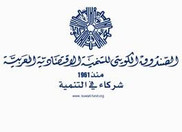
The Kuwait Development Fund supported housing in Palestine with $90 million, Mohammad Shtayeh, Palestine’s governor at the Jeddah, Saudi Arabia-based Islamic Development Bank, said on Thursday.
He said in a press release that $45 million will go for housing projects in occupied Jerusalem, $25 million for the West Bank and $20 million for the Gaza Strip.
The money will be given out as loans through Palestinian commercial banks.
Shtayeh said that the Kuwaiti imitative is significant because it will house tens of thousands of Palestinians and create dozens of jobs, which also means developing the Palestinian economy by increasing the housing and real estate share in the GPD, which currently stands at 21%.
He said in a press release that $45 million will go for housing projects in occupied Jerusalem, $25 million for the West Bank and $20 million for the Gaza Strip.
The money will be given out as loans through Palestinian commercial banks.
Shtayeh said that the Kuwaiti imitative is significant because it will house tens of thousands of Palestinians and create dozens of jobs, which also means developing the Palestinian economy by increasing the housing and real estate share in the GPD, which currently stands at 21%.
Haneyya: Sheikh Hamad pledged to rebuild war-torn Gaza
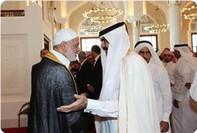
Palestinian premier Ismail Haneyya said the Emir of Qatar Sheikh Hamad Al-Thani promised him to reconstruct what was destroyed by the Israeli occupation during the war on the Gaza Strip.
"With openhanded and generous support from Emir of Qatar Sheikh Hamad bin-Khalifa Al Thani, the destroyed homes in Gaza will be reconstructed and a lot of projects will be established," premier Haneyya said in his Friday khutba (sermon) in Mohamed bin-Abdulwahab Mosque in Doha.
Haneyya thanked Qatar and its leadership for supporting Gaza people for more than three years and hailed the Doha-based Al-Jazeera satellite channel for its positions in favor of the Palestinian cause.
The Palestinian leader also told the congregation about the dangers threatening the occupied city of Jerusalem and warned that the holy city is facing the most malicious Judaization campaign ever carried out since its occupation by the Zionists.
"I am not saying that as a media stunt, but honestly Jerusalem is in real danger, and I place this matter in your hand so that we can work together to save it," he added.
The premier also talked about the Israeli blockade on Gaza and urged the Qatari people to intensify their efforts to break it.
He also urged Egypt and the Arab and Islamic countries to come together to support Gaza in the face of Israel's siege and aggression.
"With openhanded and generous support from Emir of Qatar Sheikh Hamad bin-Khalifa Al Thani, the destroyed homes in Gaza will be reconstructed and a lot of projects will be established," premier Haneyya said in his Friday khutba (sermon) in Mohamed bin-Abdulwahab Mosque in Doha.
Haneyya thanked Qatar and its leadership for supporting Gaza people for more than three years and hailed the Doha-based Al-Jazeera satellite channel for its positions in favor of the Palestinian cause.
The Palestinian leader also told the congregation about the dangers threatening the occupied city of Jerusalem and warned that the holy city is facing the most malicious Judaization campaign ever carried out since its occupation by the Zionists.
"I am not saying that as a media stunt, but honestly Jerusalem is in real danger, and I place this matter in your hand so that we can work together to save it," he added.
The premier also talked about the Israeli blockade on Gaza and urged the Qatari people to intensify their efforts to break it.
He also urged Egypt and the Arab and Islamic countries to come together to support Gaza in the face of Israel's siege and aggression.
15 jan 2012
OIC: Gaza needs 100000 housing units
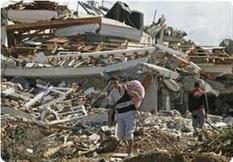
The Gaza Strip is in need of 100000 new housing units following the Israeli war on the coastal enclave, the organization of Islamic cooperation (OIC) said in its monthly report on the humanitarian condition in Gaza on Sunday.
The organization called on member countries to expedite assistance to the reconstruction of devastated homes in Gaza and the construction of new units, pointing to the six years of Israeli siege, which, it said, contributed to the worsening of the housing shortage in the Strip.
Thousands of families are still homeless, the report said, adding that 350 housing units were rebuilt while 600 others are under construction.
The OIC pointed out that even before the Israeli war on Gaza three years ago 3600 housing units were destroyed in previous incursions and raids on the Strip, adding that the owners are either living with their relatives or in rented houses.
The organization called on member countries to expedite assistance to the reconstruction of devastated homes in Gaza and the construction of new units, pointing to the six years of Israeli siege, which, it said, contributed to the worsening of the housing shortage in the Strip.
Thousands of families are still homeless, the report said, adding that 350 housing units were rebuilt while 600 others are under construction.
The OIC pointed out that even before the Israeli war on Gaza three years ago 3600 housing units were destroyed in previous incursions and raids on the Strip, adding that the owners are either living with their relatives or in rented houses.
12 jan 2012
Khudari blames world community for slow Gaza reconstruction
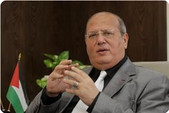
Independent MP Jamal Al-Khudari has blamed the world community for failing to embark on reconstruction of the Gaza Strip, which was devastated in the Israeli invasion three years ago.
Khudari, who is also the head of the popular committee against the siege , said that international pledges were kept in the drawers, opining that lifting the blockade on Gaza would serve as a major breakthrough in allowing free reconstruction projects.
The MP, in an interview with Al-Quds TV network, lauded the Gulf Cooperation Council countries which offered 250 million dollars in reconstruction projects in the coastal enclave in addition to Turkey that launched important strategic and development projects.
He said that only 30% of the destroyed homes were reconstructed while around 80% of partially destroyed homes were repaired, adding that only one third of the devastated agricultural sector was fixed.
Khudari pointed out that big damage was inflicted on the Strip’s infrastructure, adding that 90% of Gaza water was not fit for human consumption and is in bad need of desalination plants.
The lawmaker said that the education sector was the only sector that won complete attention, adding that Israel was barring entry of construction material for local companies while allowing limited amounts for international agencies.
Khudari said that the exchange of prisoners and the return of captured soldier Gilad Shalit to his family should have ended Israeli alleged justifications for the siege that must be lifted effective immediately.
Khudari, who is also the head of the popular committee against the siege , said that international pledges were kept in the drawers, opining that lifting the blockade on Gaza would serve as a major breakthrough in allowing free reconstruction projects.
The MP, in an interview with Al-Quds TV network, lauded the Gulf Cooperation Council countries which offered 250 million dollars in reconstruction projects in the coastal enclave in addition to Turkey that launched important strategic and development projects.
He said that only 30% of the destroyed homes were reconstructed while around 80% of partially destroyed homes were repaired, adding that only one third of the devastated agricultural sector was fixed.
Khudari pointed out that big damage was inflicted on the Strip’s infrastructure, adding that 90% of Gaza water was not fit for human consumption and is in bad need of desalination plants.
The lawmaker said that the education sector was the only sector that won complete attention, adding that Israel was barring entry of construction material for local companies while allowing limited amounts for international agencies.
Khudari said that the exchange of prisoners and the return of captured soldier Gilad Shalit to his family should have ended Israeli alleged justifications for the siege that must be lifted effective immediately.
9 jan 2012
Japan Funds Building, Equipment of Health Center
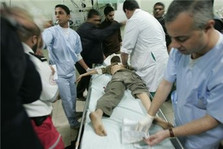
Japan will fund the construction of and equipping a new health center in the Ramallah area village of Kobar for an amount exceeding $100,000, a press release by the Representative Office of Japan said Monday.
Naofumi Hashimoto, representative of Japan to the Palestinian Authority, and head of Kobar village council, Abdel Kareem Yousif, signed the grant contract of $111,758 by which the Japanese government will fund a project.
According to the contract, the project aims to facilitate access of almost 5,000 residents of nearby areas to primary health care service at the new project.
It said that money will be utilized for the construction of a one floor building and for the equipping the health center with medical equipments, including a portable X-ray machine to end the suffering of the sick due to the insufficient health services.
Hashimoto expressed his country’s determinations to support the Palestinian people from human security perspective as well as from its political stands for their efforts to establish a viable independent Palestinian state and to develop capacities of local institutions in providing basic daily services to people, said the statement.
Japan funded projects in the West Bank and Gaza in the excess of $1 million for eleven projects in 2010 and total assistance to the Palestinians since 1993 reached to about $1.21 billion.
Naofumi Hashimoto, representative of Japan to the Palestinian Authority, and head of Kobar village council, Abdel Kareem Yousif, signed the grant contract of $111,758 by which the Japanese government will fund a project.
According to the contract, the project aims to facilitate access of almost 5,000 residents of nearby areas to primary health care service at the new project.
It said that money will be utilized for the construction of a one floor building and for the equipping the health center with medical equipments, including a portable X-ray machine to end the suffering of the sick due to the insufficient health services.
Hashimoto expressed his country’s determinations to support the Palestinian people from human security perspective as well as from its political stands for their efforts to establish a viable independent Palestinian state and to develop capacities of local institutions in providing basic daily services to people, said the statement.
Japan funded projects in the West Bank and Gaza in the excess of $1 million for eleven projects in 2010 and total assistance to the Palestinians since 1993 reached to about $1.21 billion.
